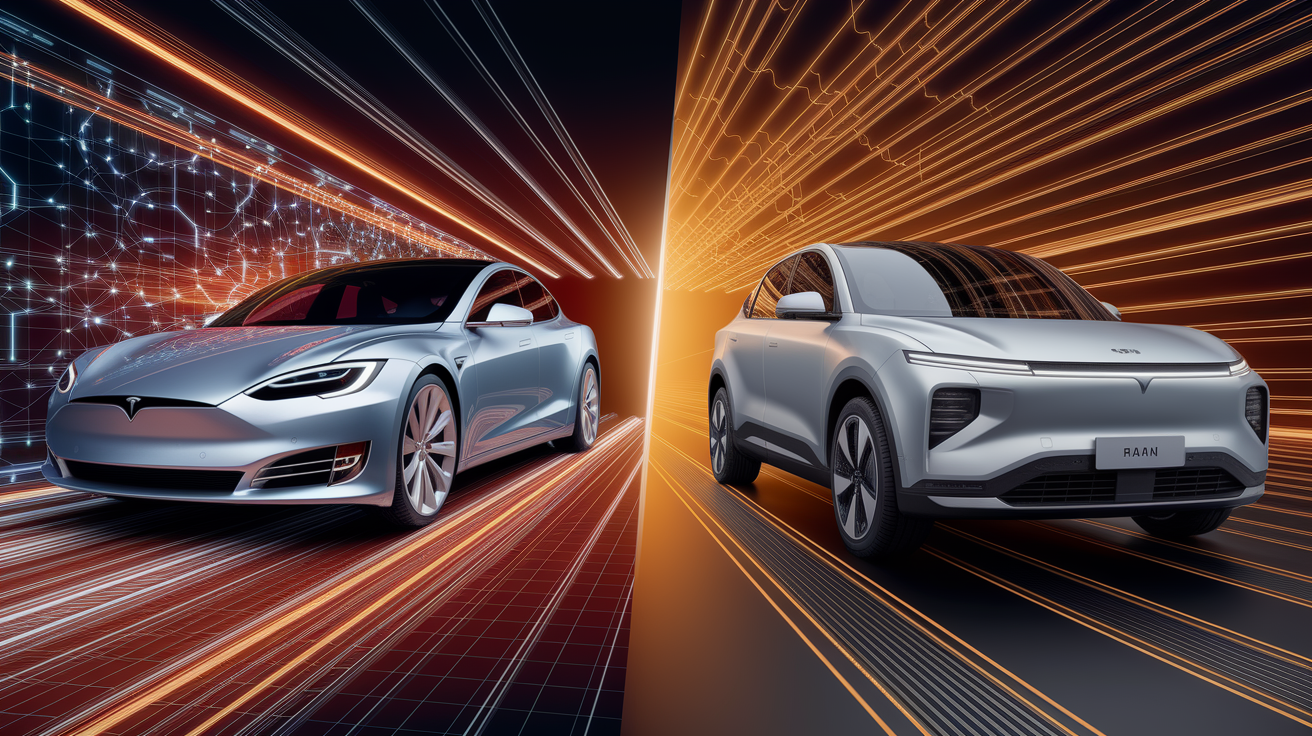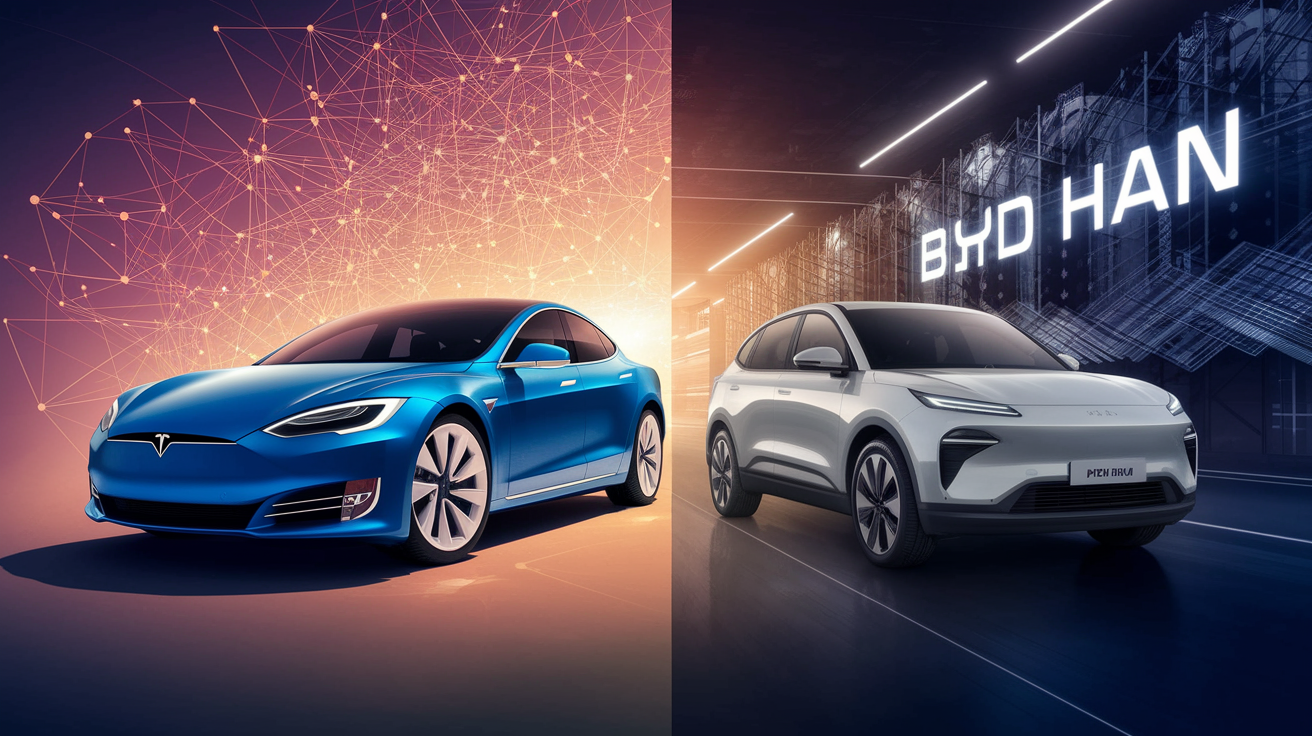The battle for supremacy in the electric vehicle sector is in full swing, driven by Tesla and BYD. Both groups pursue different strategies to assert and expand their market position. While Tesla focuses on its global presence and advanced technologies, BYD concentrates on vertical integration and strength in the local market. Two chapters shed light on the technological innovations and market strategies of these giants, to support investors and individuals in their decisions.
The Race for Innovation: Technological Strategies of Tesla and BYD

The highly competitive electric vehicle market is increasingly becoming a race for technological innovations. Tesla and BYD are at the forefront, each with its unique approach to achieving supremacy in the sector.
Tesla, known for its pioneering work in electric mobility, continues to strengthen its technological leadership by consistently investing in research and development. Particularly in the field of battery technology, Tesla remains a leader, where solid-state batteries are considered a promising evolution. These developments promise greater energy density and safety, which could be crucial for the large-scale deployment of electric vehicles. Additionally, Tesla is also investing substantial resources in autonomous driving, an area in which the company has already set standards and intends to remain a leader in innovation.
On the other hand, BYD positions itself with impressive technology in fast charging and a vertical integration strategy. New BYD models, such as the Han L and the Tang L, offer a charging power of up to 1,000 kW. This impressive performance allows vehicles to be ready for new departures in less than ten minutes. This technology-driven efficiency, combined with BYD’s capability to produce in-house almost all components – from batteries to semiconductors – gives the company a cost advantage and unparalleled strategic flexibility.
The competition for first place culminates in a duel between Tesla’s global reach and technology and BYD’s specialized yet highly effective development. While BYD seeks to close the gap in charging infrastructure for a global presence, Tesla focuses on refining and expanding its already widely distributed infrastructure. The challenge for both is to maintain their niche while simultaneously adapting to rapid market changes.
The strategies of both groups will determine not only the future of their market shares but also the entire direction in which the electric mobility sector is moving. The balance between innovation, adaptation, and expansion will be crucial to ensure leadership in this rapidly evolving industry in the long term.
Strategic Approaches and Infrastructure: The Intense Battle of Tesla and BYD for Leadership in the Electric Vehicle Market

In the dynamic scene of the electric vehicle market, Tesla and BYD are at the forefront, their market strategies and infrastructures serving as key weapons in this intense battle. Although both are leaders, they pursue different approaches to strengthen their position and realize their ambitions.
Tesla is considered an innovator and focuses on strengthening itself through technological advantage and a solid brand identity. Vertical integration is a central aspect of their strategy, where controlling the entire value chain – from battery production to distribution infrastructure – brings decisive advantages. Direct sales allow Tesla to enhance its relationship with customers and maximize margins. In this context, Tesla has built a global network of Supercharger stations, which ensures fast and convenient charging for Tesla drivers. These developments not only consolidate Tesla’s position as a technological leader but also strengthen its market presence.
BYD takes a more pragmatic approach, centered on cost efficiency and alliances. By focusing on reducing production costs, BYD can offer more price-competitive models, thus attracting a wide range of customers. The strategy of developing a diversified product line, with vehicles ranging from cars to buses, reduces dependence on specific models and allows BYD to respond to diverse market needs. Building partnerships and collaborations is another pillar of BYD’s strategy to overcome technological barriers and penetrate new markets. In-house production of batteries and the expansion of a charging station network characterize the company’s efforts to strengthen its infrastructure.
In terms of market leadership, Tesla stands out with its strong brand recognition and leadership positions in innovation, offering undeniable advantages. At the same time, however, the company continues to face challenges in the areas of production and supply chain. BYD has managed to establish itself in the market due to its efficient cost production and alliances, but it needs to work on increasing the global recognition of its brand to align with Tesla.
Ultimately, the future of market leadership in the electric vehicle sector will largely depend on both companies’ ability to adapt to changing market conditions and meet customer needs at all costs. The strategic decision of whether innovation or efficiency is the more secure path to success remains a central issue in this exciting competition.